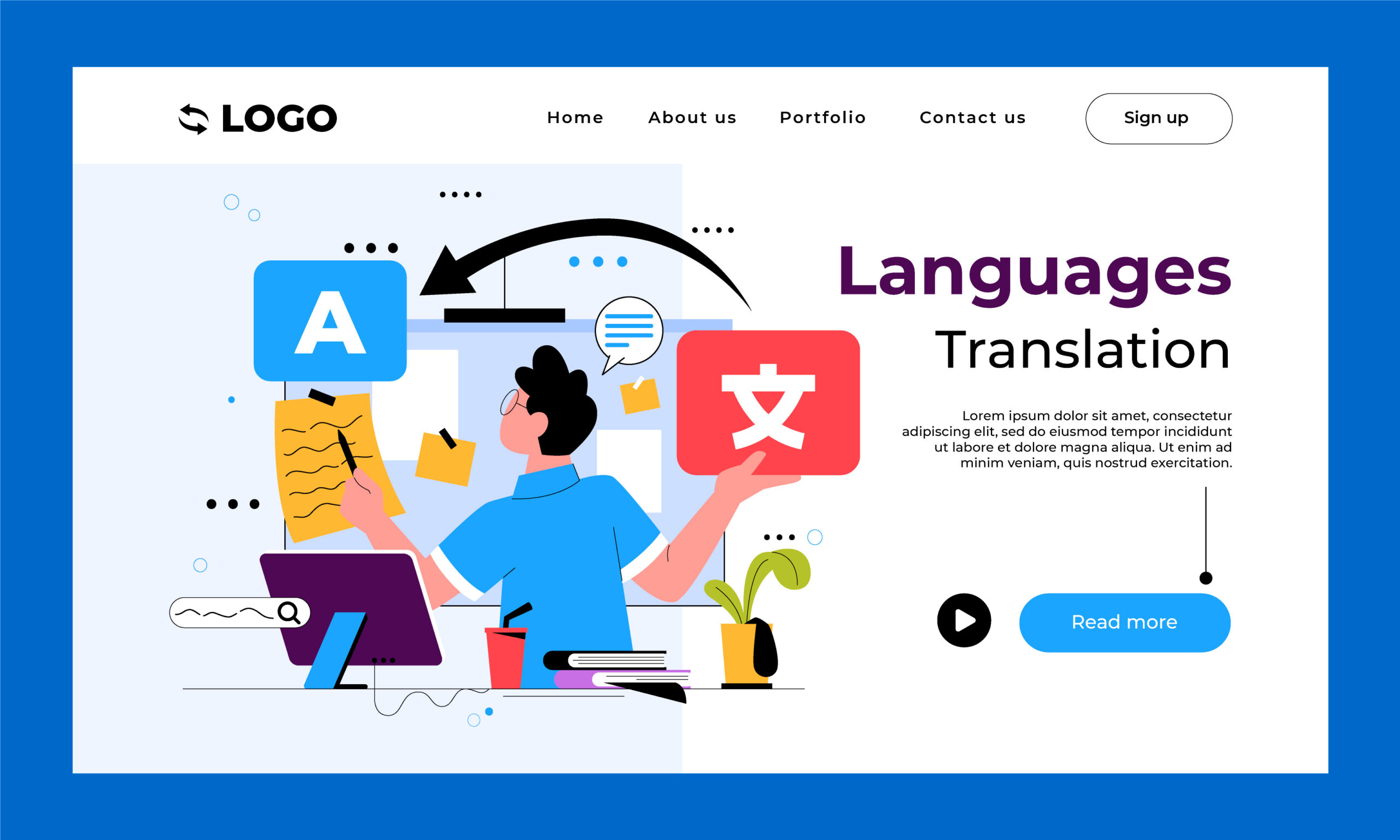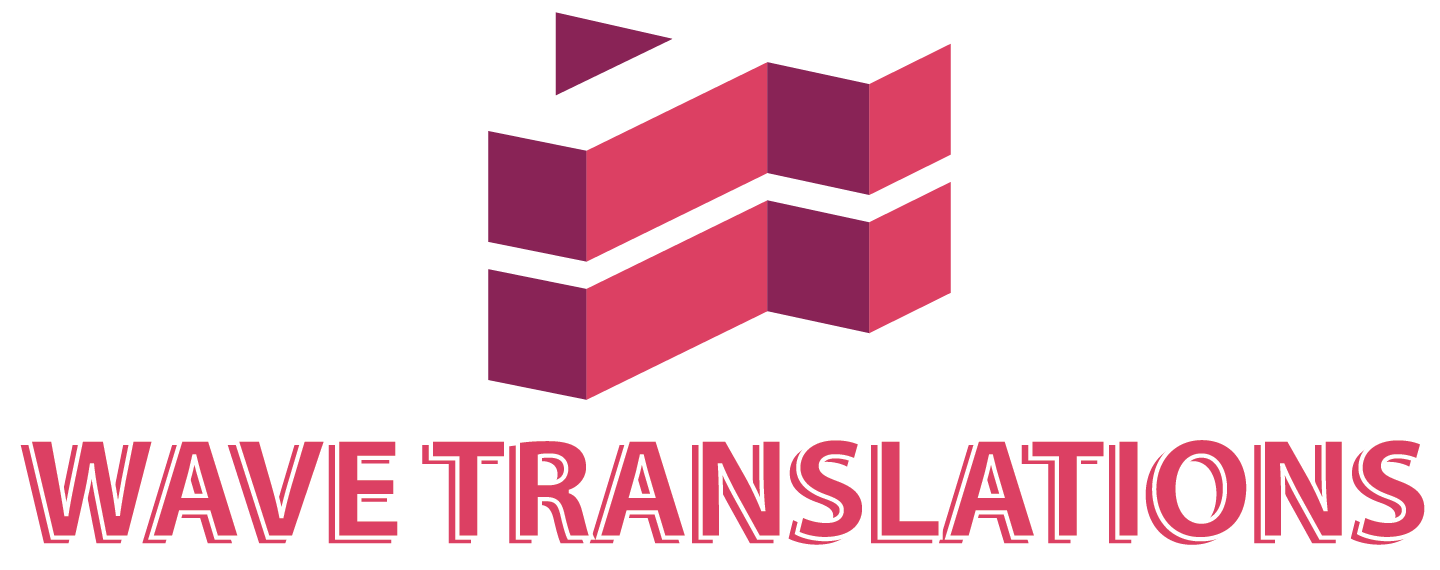In today’s interconnected world, businesses are no longer confined to their local markets. With the internet breaking down geographical barriers, having a multilingual website has become a necessity for companies aiming to expand their reach and connect with international audiences. The website translation cost varies upon several factors influencing the overall expense. At Wave Translations , we understand that every business is unique, and so are its translation needs. Whether you’re looking to translate a single landing page or an entire e-commerce platform, understanding the key cost drivers will help you plan effectively and make informed decisions.
Key Factors That Influence Website Translation Cost
Number of Words
The most common way to calculate translation costs is by counting the number of words in your content. This includes all text—headings, paragraphs, product descriptions, buttons, and even metadata. For instance:
- A simple homepage might contain around 500–1,000 words.
- An e-commerce site with detailed product pages could easily exceed 50,000 words.
The more words you need translated, the higher the cost. However, many translation agencies offer discounts for large volumes, making bulk translations more cost-effective per word.
Complexity of Content
Not all content is created equal. Some texts are straightforward, while others require specialized knowledge. For example:
- Technical documents (e.g., user manuals, software guides) demand translators with expertise in specific industries.
- Legal contracts must adhere to strict terminology and formatting rules.
- Creative marketing copy often requires transcreation—a process where translators adapt slogans, taglines, and advertisements to resonate culturally with the target audience.
Highly complex or creative content typically comes at a premium due to the additional effort involved.
Languages Required
The choice of target languages significantly impacts translation costs. Common languages like Spanish, French, and German tend to be more affordable because there’s a larger pool of qualified translators available. On the other hand, less commonly spoken languages such as Icelandic, Finnish, or Swahili may incur higher fees due to limited translator availability. Additionally, regional differences within a language can also affect pricing. For example, translating into Brazilian Portuguese versus European Portuguese may involve slight variations in vocabulary and style, requiring tailored expertise.
Additional Services
While basic translation converts text from one language to another, full localization goes a step further by adapting your website to suit cultural nuances, legal requirements, and user preferences in the target market. Additional services that contribute to localization include:
- Multimedia localization: Subtitling videos, dubbing audio, and creating transcripts.
- SEO optimization: Researching keywords in the target language and optimizing URLs, titles, and meta descriptions for better search engine rankings.
- Design adjustments: Ensuring fonts, colors, and layouts align with cultural expectations.
These extras enhance the user experience but come with added costs.
How Is Website Translation Cost Calculated?
Translation agencies typically use two primary methods to determine pricing: per-word rates and hourly rates .
Per Word Pricing
This is the most widely used method and provides transparency in billing. The cost per word varies based on:
- Language pair: Translating English to Spanish is generally cheaper than English to Japanese.
- Content type: Technical or highly creative content commands higher rates.
- Volume discounts: Larger projects often qualify for reduced per-word rates.
Numbers, dates, and proper names are included in word counts because they require adaptation to fit local conventions. For example:
- In the U.S., “1,000” represents one thousand, whereas in Germany, it would appear as “1.000.”
- Names like “John Smith” may need grammatical adjustments in languages with case systems, such as Russian or Polish.
Hourly Pricing
Certain tasks, such as developing a translation style guide or building a glossary , are billed hourly. These preparatory steps ensure consistency across your website and save money in the long run by minimizing errors and rework.
Can You Save Money on Website Translation?
With smart planning and the right tools, you can significantly reduce your translation expenses. Here are some proven strategies:
1. Use Computer-Assisted Translation (CAT) Tools
CAT tools analyze your content and identify repeated phrases, storing them in a Translation Memory (TM) database. When similar content appears later, the tool applies pre-translated segments, reducing both time and cost. Typical discounts include:
- Exact matches (100%): 25% off
- Repetitions: 25% off
- Partial matches (85–99%): 50% off
For websites with recurring product descriptions or boilerplate text, CAT tools can lead to substantial savings.
2. Utilize Translation Memory
Translation Memory stores previously translated content, allowing you to reuse it in future projects. For example:
- If you first translate your homepage and product pages, subsequent updates or new sections benefit from existing translations, lowering costs over time.
3. Prioritize Essential Pages
Instead of translating your entire website at once, focus on key pages such as:
- Homepage
- About Us
- Contact Information
- Best-selling products or services
4. Invest in Style Guides and Glossaries
A well-crafted style guide ensures consistent tone and formatting, while a glossary standardizes industry-specific terms. Both tools streamline the translation process and reduce the likelihood of costly revisions.

Does Specialized Content Cost More?
Yes, specialized content often incurs higher costs due to the need for subject-matter experts. Fields like medicine, law, engineering, and IT require translators with advanced qualifications and experience. Similarly, creative content designed to engage and persuade—such as advertisements or brand messaging—may require transcreation , which blends translation with copywriting skills. Transcreation is typically charged hourly rather than per word.
How Does Language Choice Affect Costs?
Language selection plays a crucial role in determining translation expenses. Consider these examples:
- Affordable languages: Spanish, French, Chinese (Mandarin)
- Mid-range languages: Arabic, Russian, Korean
- Expensive languages: Icelandic, Norwegian, Japanese
Regions with higher living costs, such as Switzerland or Japan, also tend to have pricier translation rates. Additionally, rare dialects or indigenous languages may pose challenges in finding qualified translators, driving up costs.
Additional Services That Impact Costs
Full website localization extends beyond mere translation. Depending on your goals, you might need:
- Multimedia localization: Adapting images, videos, and audio files for cultural relevance.
- SEO optimization: Tailoring keywords, meta tags, and alt text for regional search engines.
- CMS integration: Seamlessly incorporating translated content into platforms like WordPress or Shopify.
Each service adds value but contributes to the overall expense.
How to Optimize Your Website Translation Budget
To maximize efficiency and minimize costs, consider these strategies:
- Plan Ahead: Identify priority pages and phase your translation rollout.
- Choose Affordable Languages First: Start with widely spoken languages before tackling niche markets.
- Utilize Technology: Invest in CAT tools and Translation Memory to leverage repetitive content.
- Collaborate with Experts: Work closely with your translation provider to clarify objectives and expectations upfront.
Estimating Your Website Translation Cost
Estimating website translation costs involves evaluating several factors, including word count, language pairs, content complexity, and additional services. While prices vary widely—from $100 for a basic homepage to thousands for comprehensive localization—the investment pays dividends by opening doors to global markets.
At Wave Translations , we pride ourselves on delivering exceptional quality at competitive rates. Our team combines cutting-edge technology with human expertise to ensure your website resonates with international audiences. From initial consultation to final delivery, we partner with you every step of the way.
Ready to take your website global? Contact Wave Translations today for a customized quote and discover how we can help you achieve your international growth goals efficiently and affordably.
Frequently Asked Questions
What factors influence the cost of translating a website?
The cost depends on word count, language pairs, content complexity, and additional services like SEO or multimedia localization. Repetitive text lowers expenses using CAT tools, while rare languages or technical content may increase the overall price.
How is the pricing for website translation determined?
Pricing is typically calculated per word or hourly for specialized tasks like glossary creation. Common languages are more affordable, while rare ones cost more due to limited translator availability. Tools like translation memory can help reduce expenses over time.
Can I reduce the expenses associated with website translation?
Yes, you can cut costs by prioritizing essential pages and leveraging CAT tools. Translation memory stores repeated phrases, offering discounts for reused content. Choosing widely spoken languages and planning your project in phases also helps manage your budget effectively.
Why does the choice of language impact translation expenses?
Language choice affects costs because translator availability varies. For example, Spanish or French translations are cheaper, while Icelandic or Finnish are pricier. Regions with high living costs, like Japan, also tend to have higher rates for translation services.
Is multimedia localization included in the cost of website translation?
Multimedia localization, such as subtitling or voice-overs, is often an additional service. It requires extra effort and expertise, which can increase the overall cost. Discuss your needs with the provider to understand how these services might affect your budget.
Does technical content increase the cost of website translation?
Yes, technical content raises costs because it requires translators with specialized knowledge. Fields like medicine, law, or engineering demand precision, and qualified translators charge more. Providing glossaries or style guides can help streamline the process and control expenses.
What role do CAT tools play in managing translation expenses?
CAT tools analyze content and identify repetitions, reducing costs by storing translations in memory. This ensures consistency and saves time on future projects. Leveraging these tools is an effective way to manage large-scale translation projects without overspending.
How does SEO localization affect the overall cost of website translation?
SEO localization involves adapting keywords, meta tags, and URLs for target markets, which adds to the cost. While it increases upfront expenses, optimized content improves search engine visibility. Balancing SEO needs helps ensure long-term benefits for your global audience.
Are there hidden fees in website translation estimates?
Some agencies include hidden fees for rush jobs, complex file formats, or additional revisions. Always ask about potential extra charges upfront. Reputable providers offer transparent pricing, ensuring no surprises when finalizing your project budget.
Why should I invest in professional website translation services?
Professional translation agency such as Wave Translations ensures accuracy, cultural relevance, and high-quality output. Poor translations can harm your brand’s reputation and SEO rankings. Investing in experts minimizes errors, builds trust with users, and ultimately pays off through better engagement and conversion rates.

